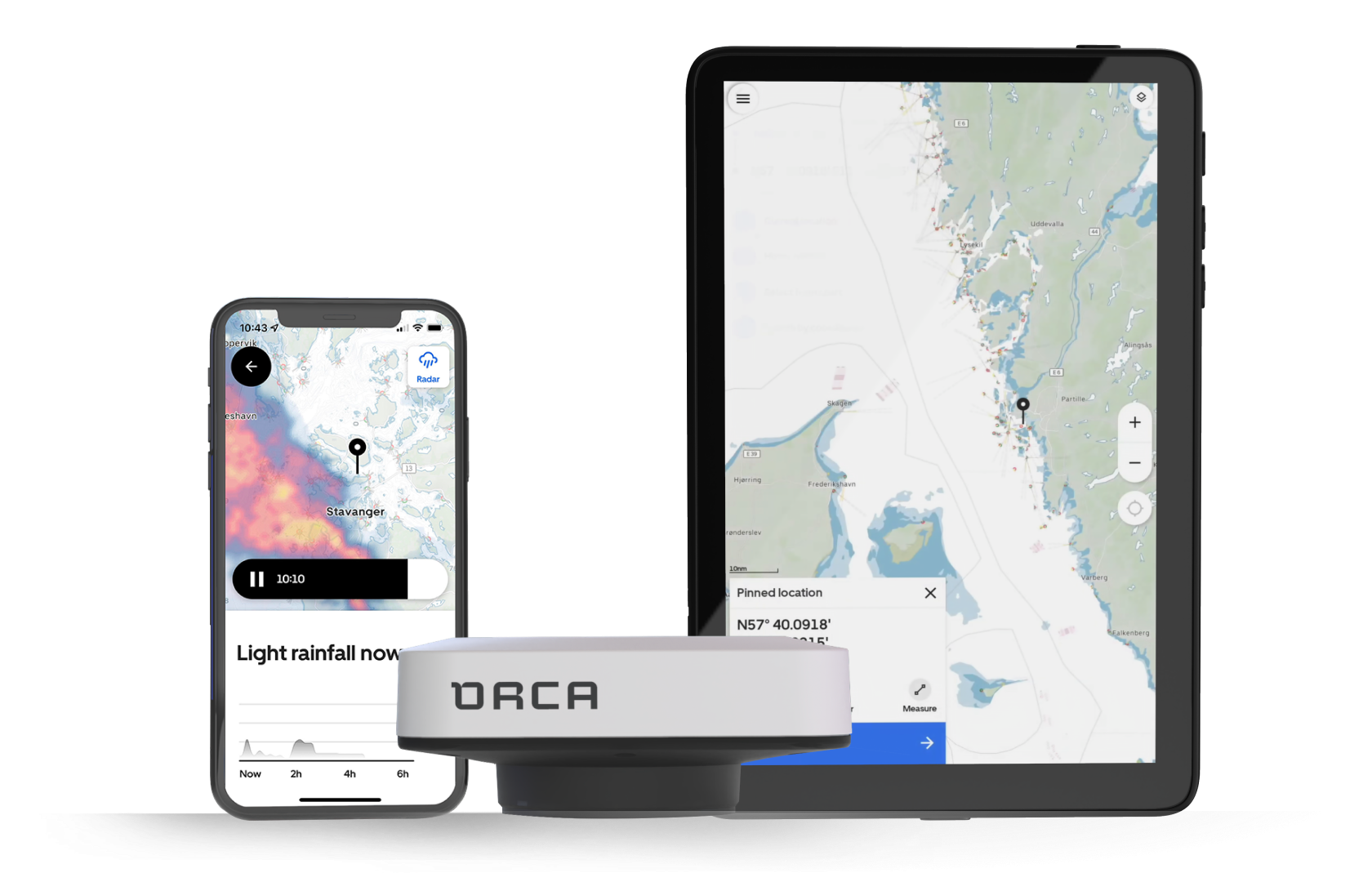All Articles
Polar Performance
October 5, 2023 • 5 min read
How to think about your polar diagrams.
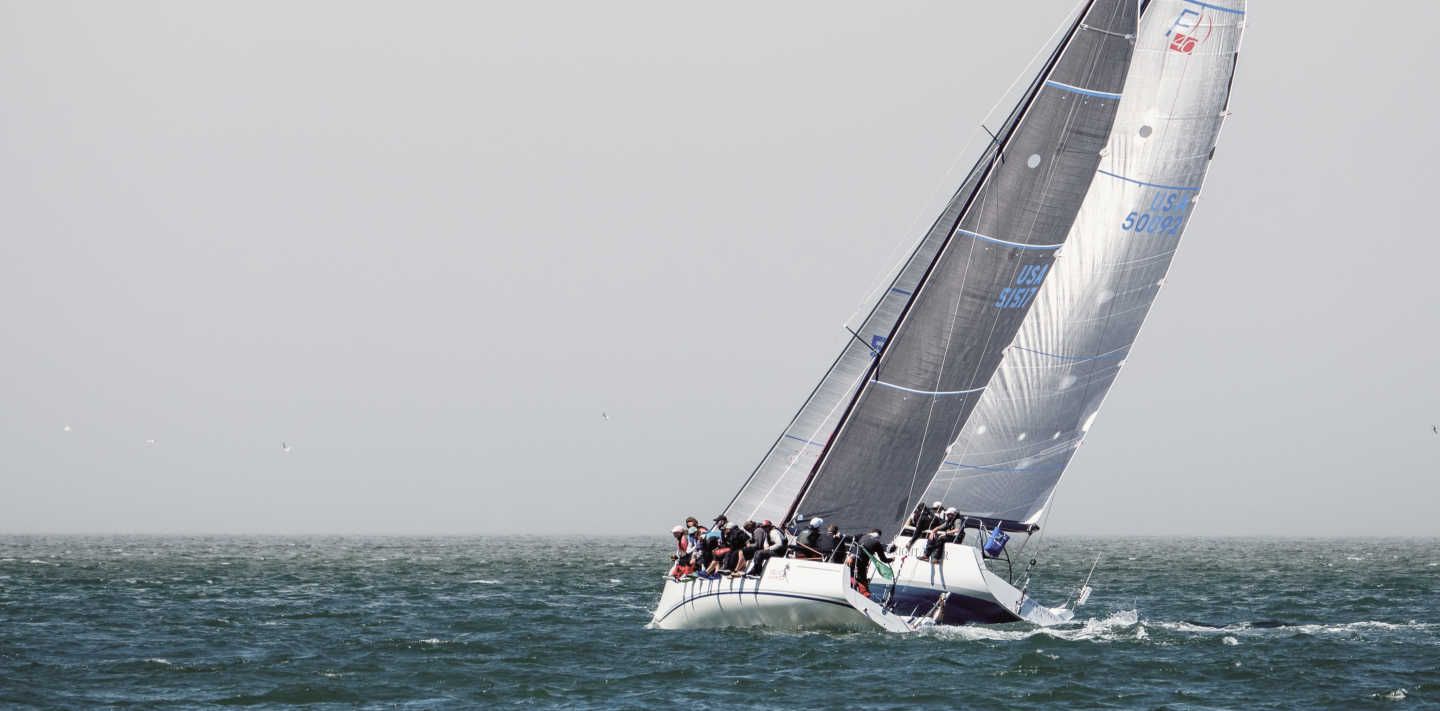
Polar diagrams help you predict how fast you’ll sail for a given wind angle and wind speed.
These diagrams are fantastic tools to help you understand how well you are sailing compared to your optimal performance – and with advanced sail systems like Orca, they make preparation ahead of a sailing trip or a race a lot easier.
But for polar diagrams to be helpful, they must be accurate.
Maybe you’ve heard a sailor say with a sense of pride: “I averaged 130% polar performance on the last leg”. At Orca, we believe that consistently beating your polar makes no sense, and an experience like this should warrant a review of your polar diagrams.
Inaccurate polar diagrams can often do more harm than good, as they will give you inaccurate routes and make it hard to understand and improve your sailing performance. This article explains how we think about polars at Orca, how to set them up, identify if they are accurate, and what to do if you are unable to hit your polars.
How to think about Polar Diagrams
Conceptually, we recommend you think of your polar diagram as a representation of your boat’s “perfect sailing performance in ideal conditions”. Your polar should represent the maximum performance your boat can achieve in a perfect scenario.
By keeping your polar baseline relative to your perfect sailing performance, you’ll have fixed target metrics that work together with your intuition to tell you when you are sailing well.
If you constantly readjust your polars based on your crew, sailing intent, and sea state, it will be a lot harder to identify abnormalities and potential improvements in your sailing.
When you know you’ll sail slower than your performance baseline, such as when you are cruising casually or sailing in a bad sea state, Orca gives you the tools to adjust.
Setting up your Polar Diagram
Setting up polars in Orca is easy. From Main Menu > Settings > Vessel > Polar Performance, you’ll have two options:
Search for your boat or boat type in the ORC database
Set up a Custom Polar Diagram
Offshore Race Committee (ORC) Polars
If you have an ORC certificate, or if your boat type is in the ORC database, you should use an ORC polar as a starting point for your polar in Orca.
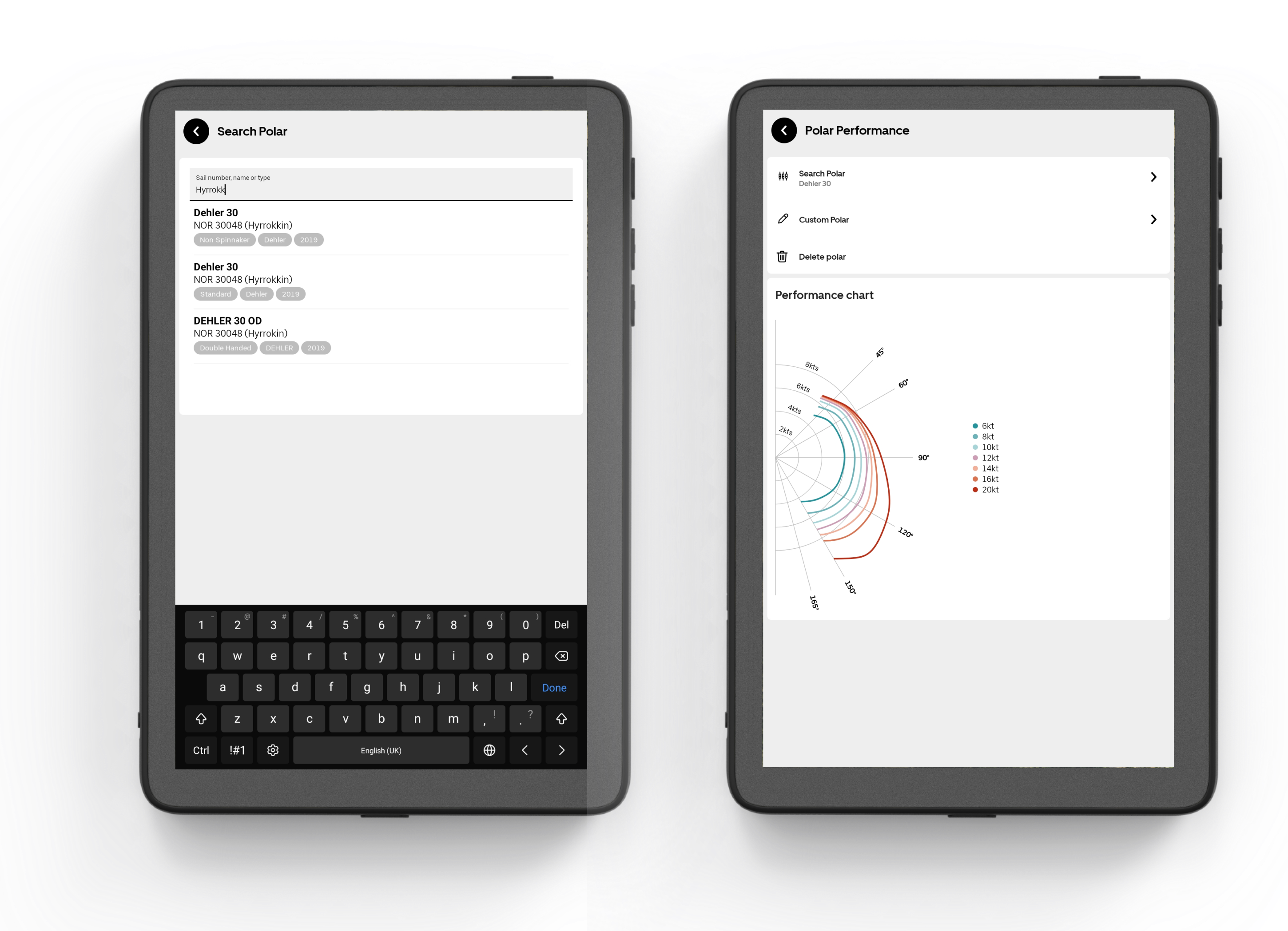
Search for polars in the official ORC database. Orca also includes non-spinnaker and shorthanded polars.
Keep in mind that your ORC polar may not represent your actual performance. Even if you have an ORC certificate for your specific boat, you may find yourself in need of adjusting your polars via the Custom Polars screen.
Custom Polars
If your boat type is not in the ORC database, you can create a custom Custom Polar.
When creating a Custom Polar Diagram, you’ll first be asked to enter performance targets for 10 knots wind speed. From your 10 knots polar, Orca will extrapolate your performance targets to the remaining wind speeds from 6 to 20 knots. From here, you can fine-tune every part of your polar to the decimal.
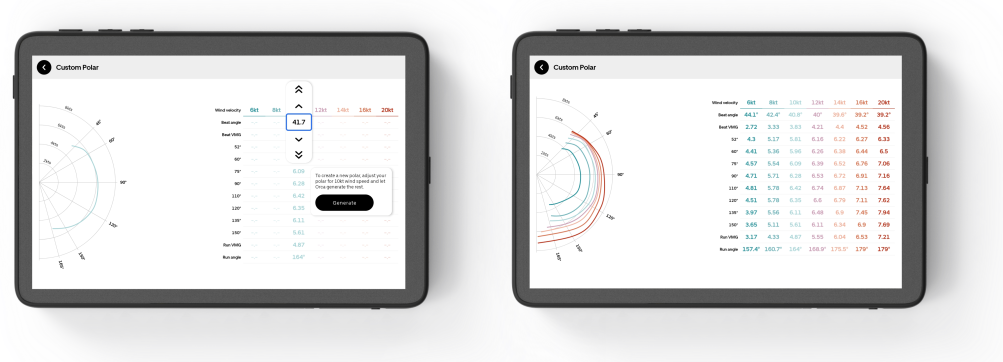
Create a custom polar, or tweak an ORC polar to your true sailing performance.
Your boat manufacturer should be able to provide you with a good baseline polar. If you are not able to find any, look for polars of boats with roughly the same hull shape, weight, rig, and manufacturing year as a baseline.
How Polar Diagrams are used in Orca
Polar Diagrams are used for three systems in Orca: Laylines, Instruments, and Routing.
Laylines help you project where you’ll go if you follow your polar beat or run angles. Instruments help you understand how quickly you are sailing relative to your polar performance targets and routing uses your polar and wind forecast to find the best path to your destination.
Each of these systems depends on your polars and also helps you identify potential accuracy issues.
Laylines
Laylines are shown as extensions from your location mark in the chart. To calculate your laylines, Orca takes into account:
The run angle and beat angle from your polar diagram
Leeway, which Orca calculates from your heel angle and boat speed
Effects of tides and sea state based on the difference between STW and heading against your COG and SOG over time
Polar diagrams define the baseline angles for your laylines. Because of this, you want to make sure your beat angles are accurate.
Laylines are shown in the chart. Sailing is sped up 5x to illustrate wind shifts.
To identify your beat angles, you want to sail upwind in moderate winds in an area with little to no tides. Adjust your true wind angle to see which angle gives you the best upwind VMG. If your laylines don’t match when you see the highest upwind VMG, you should adjust your polar.
Identifying accurate run angles is more complicated, and requires logging for accurate results because boat speed and VMG vary a lot less for changes in True Wind Angle compared to beat angles.
We generally recommend you stick to run angles provided by your boat manufacturer or ORC rating polar.
Polar Performance Instruments
Orca gives you instruments that tell you how well you are sailing compared to your polar diagram. These can be found in the Sailing Performance category, and are:
Target Boat Speed – your expected boat speed at the given wind speed and angle
Target Beat Angle – your optimal True Wind Angle at the given wind speed when going upwind
Target Run Angle – your optimal True Wind Angle at the given wind speed when going downwind
Target Beat VMG – your expected upwind VMG at the given wind speed
Target Run VMG – your expected downwind VMG at the given wind speed
Polar Performance – gives you a percentage value of current boat speed against your target boat speed
If you are interested in tracking your sailing performance and understanding the accuracy of your polar, you want to add the Polar Performance instrument to your primary sailing instrument panel.
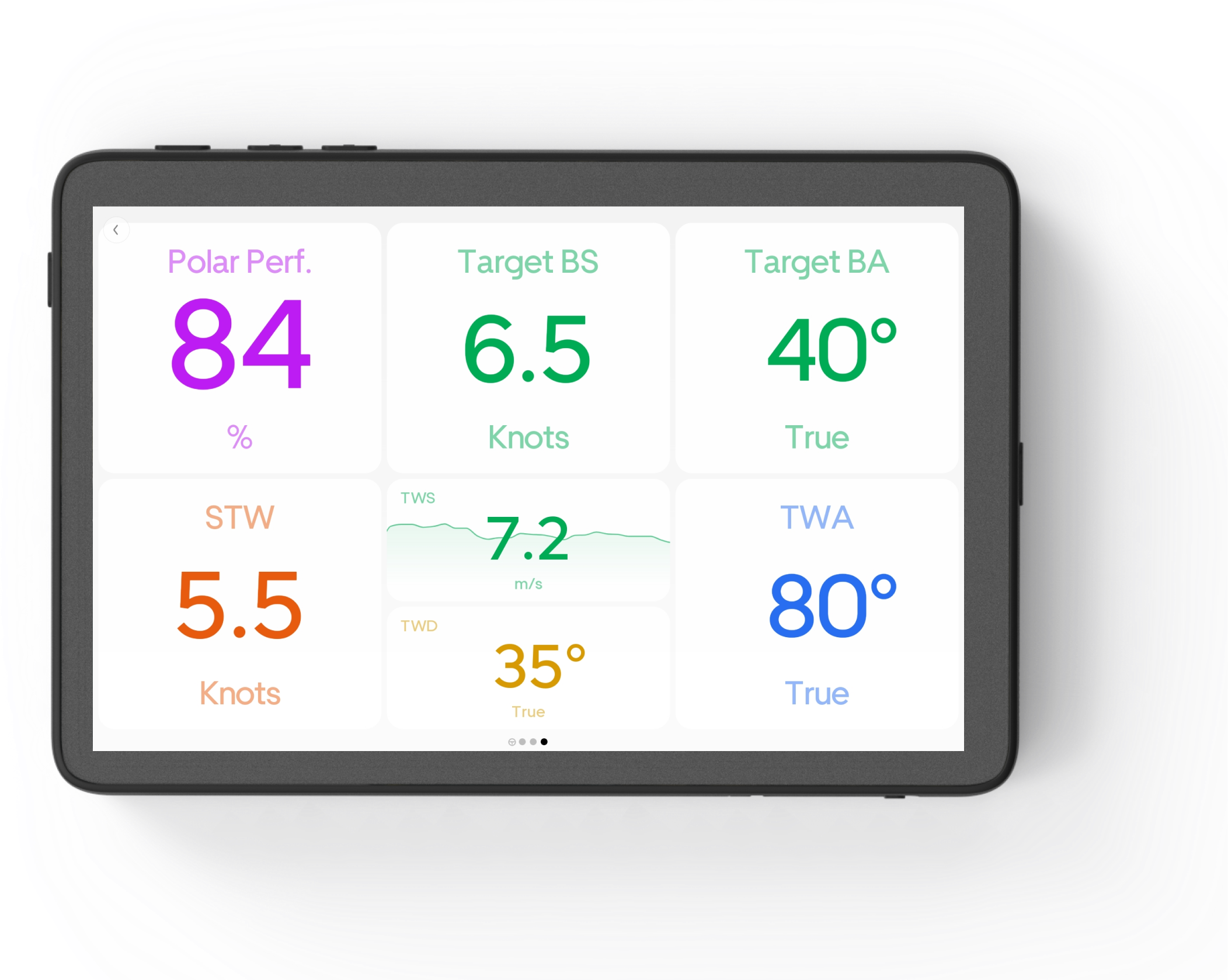
A great example of polar instruments that let you compare your actuals against your polar targets.
If you are able to hit 100% polar performance when you sail at your peak performance, your polars are well-tuned. You want to adjust your polar speed targets if:
You are sailing above 100% polar performance, constantly or at certain wind angles or speeds
If you are unable to reach close to 100% when sailing perfectly
If you are cruising, and not putting effort into sailing at peak performance, you should not expect to hit 100% polar performance. In that case, we do not recommend you adjust your polars to offset your sailing effort.
Routing
Sail Routing in Orca uses your polar diagrams along with the weather forecast and chart data to find the fastest path to your destination.
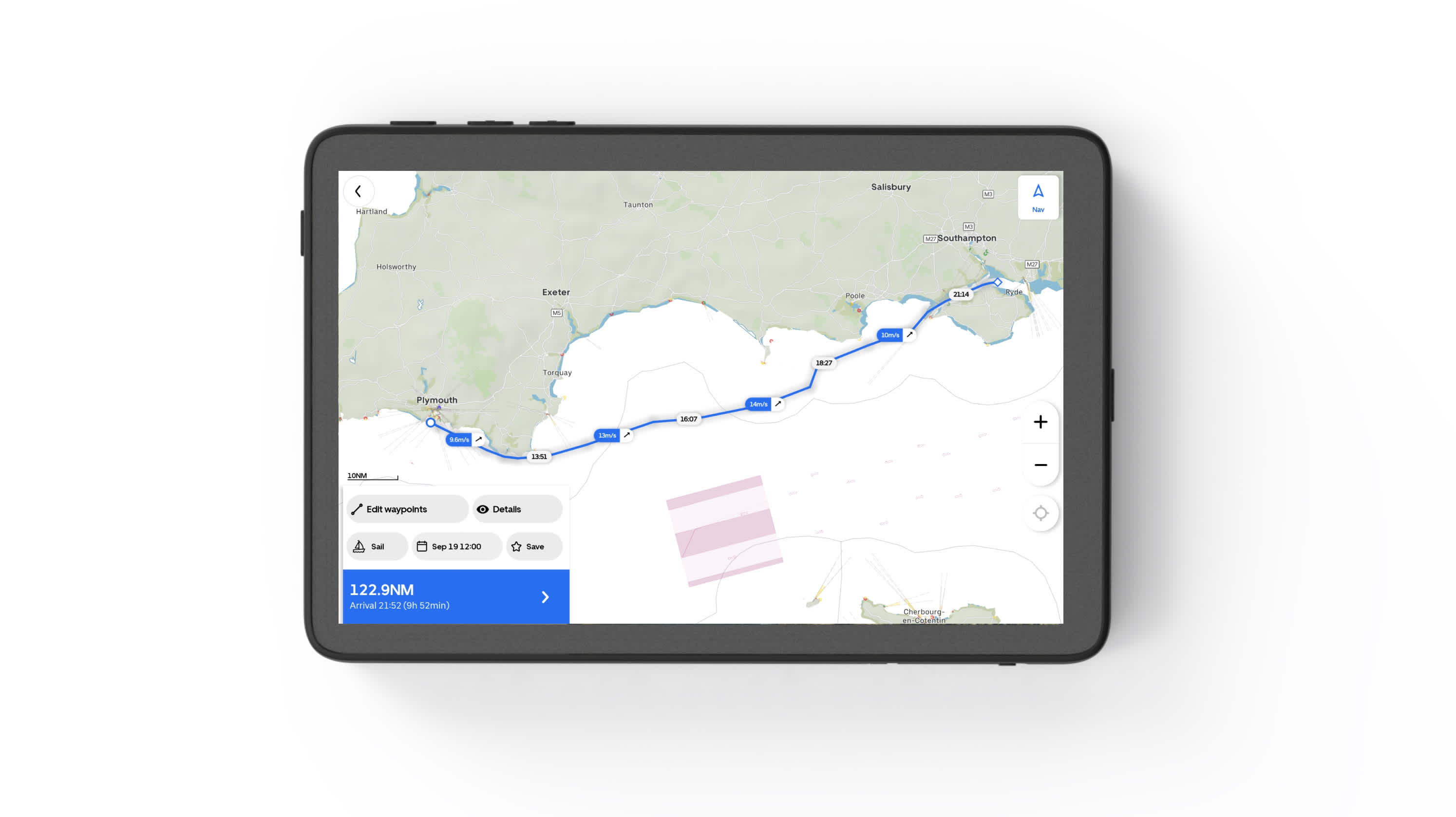
Downwind sailing from Plymouth to Southampton. Orca's sail routes do multiple course corrections to find the best wind and tide conditions.
By using Layline and Polar Performance Instruments as benchmarks, you’ll be able to understand how well you are sailing and in turn how you are progressing along the planned route compared to what the Sail Route expects you to.
More accurate polars mean more accurate Sail Routes. Even small variations in a polar diagram can give large deviations in routes – in particular, longer routes where Sail Routing has greater freedom to find specific weather systems.
You want accurate routes and you want accurate ETAs, even when you are not sailing at peak performance. When this happens, Orca gives you the tools to adjust your routes to your sailing.
Next week’s release introduces two new route settings that give you representative Sail Routes when sailing under non-ideal conditions or non-peak performance:
Performance factor – reduce boat speed and increase beat angle compared to your polars
Night compensation – reduce boat speed from dusk to dawn
Custom Polars, along with the upcoming Performance Factor and Night Compensation make for a lot more accurate routes, while giving you consistent performance targets that help you understand your sailing performance.
We’re also working on automatically setting these performance factors. Very soon, you can sail freely and let Orca monitor and adapt to your performance as you go.
Better sailing with Orca
Orca is the only navigation system that combines laylines, performance instruments, and sail routing with an incredibly accurate sailing processor.
With these experiences in a single system, you’ll have all the tools you need to uncover the fine details about your sailing performance – and have more fun sailing.
If you want to sail better and plan better, head over to the Orca Store to order your next-generation navigation system.

